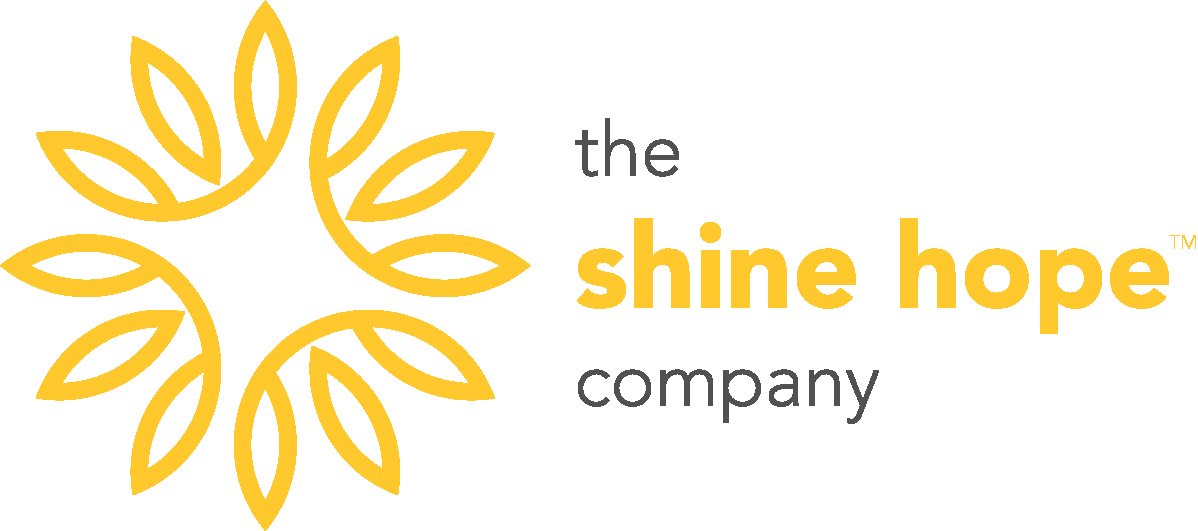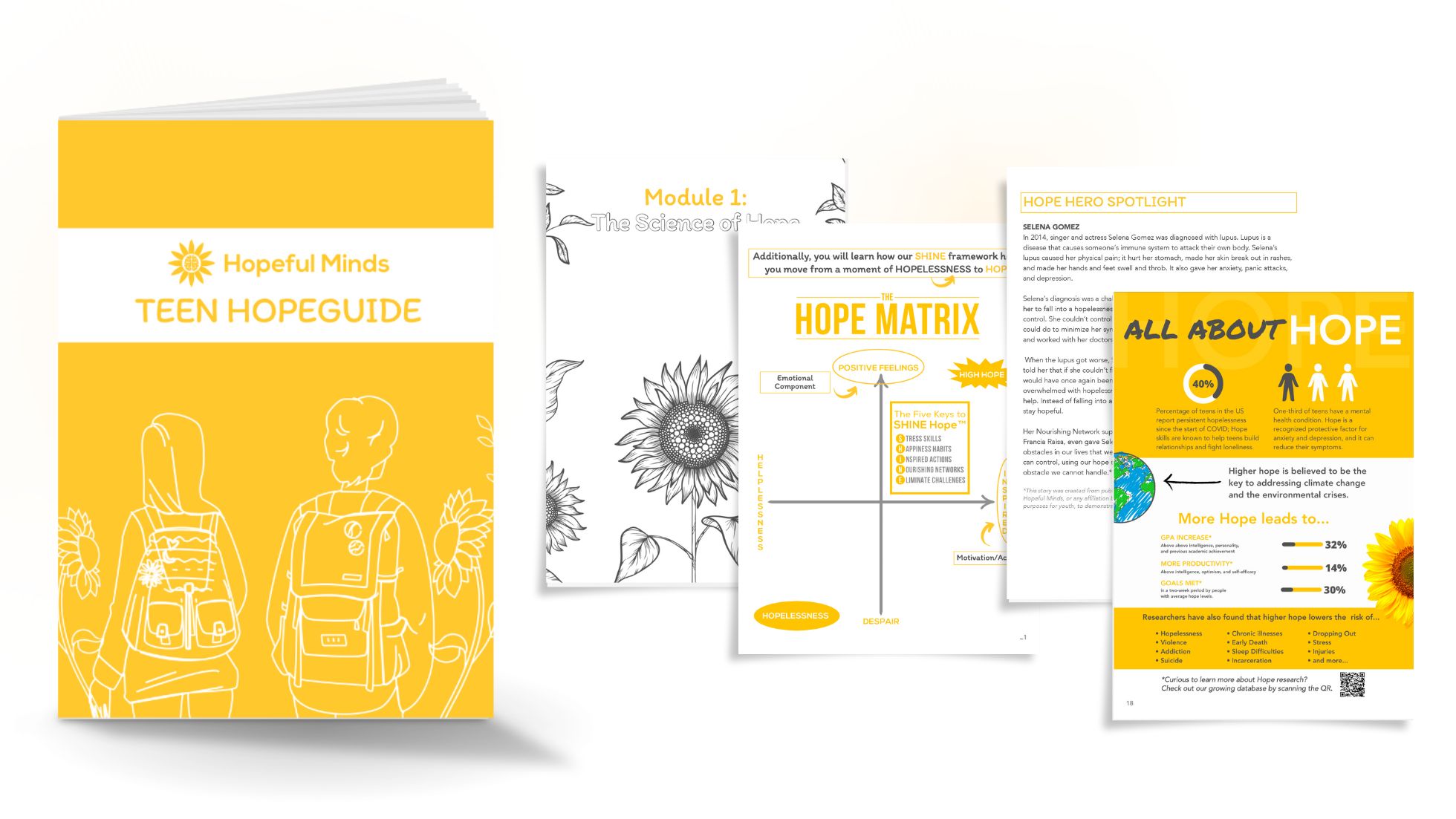We’ve Been Building for This Moment: Hope Changes Everything (Updated Stats)
After 14 years and 25,000 participants, new research has confirmed what has driven our mission from the start:
Hope isn’t wishful thinking; it’s the single strongest predictor of future well-being.
The study found that individuals with higher Hope had improved later well-being, education, economic and employment outcomes, perceived and objective health, and were less likely to experience loneliness.
These findings confirm all the research we’ve been compiling for 15 years.
And, Hope is Measurable.
However, today, over 40% of U.S. youth report persistent hopelessness.
If that doesn’t change, we are facing a generational crisis of agency, purpose, addiction, violence, and poor mental health.
The Science Is Clear and We’re Ready
At The Shine Hope Company and iFred, we’ve spent 15 years building what this moment demands: the “how” of Hope.
Through evidence-based tools, measurable programs, and a whole-society framework, we teach Hope as a learnable skill, teaching all how to transform despair into feeling better, and helplessness into action. So that we learn to manage these moments of hopelessness, both big and small, in healthy, proactive ways.
Last week, I was at an Alignment for Progress event led by Patrick Kennedy and Rebecca Bagley of The Kennedy Forum, as well as other incredible mental health leaders, and I’m so inspired by how our work aligns with their 90/90/90 Framework:
- 90% Of individuals being screened for mental health conditions or substance use disorders.
- 90% Receiving the evidence-based services and support they need.
- 90% Of those treated, being able to manage their symptoms and achieve recovery.
This is How We’re Advancing the 90/90/90 Goals
90% Of individuals being screened for mental health conditions or substance use disorders.
We have everyone measure their Hope Score to screen for low levels of Hope.
Our MyHopeScore.com measures Hope, provides instant access to lessons and hotlines, and connects users to our over 12,000-member Anxiety and Depression Support Group. By teaching prevention, we save lives and reduce costs. Measuring Hope and teaching others how to build it are proactive investments in public health.
90% Receiving the evidence-based services and support they need
By reframing hopelessness as a skill deficit rather than, not a character flaw, we remove stigma and help people seek support sooner. We all experience moments of hopelessness, all the time; it is how we manage those moments that matters. Those with low Hope scores are guided to clinical, community, or peer resources before crisis hits. By teaching Hope Skills to all, through evidence-based interventions that increase Hope and may decrease anxiety and depressive symptoms, we also decrease the number of people actually needing care as well.
We teach all kids and communities how to Hope through:
- Hopeful Minds® for schools, parents, teens, educators, and all who want to educate others.
- Hopeful Mindsets® for veterans, recovery programs, and incarcerated individuals, soon to be more. Anyone going through a challenge needs to adopt a Hopeful Mindset to get through it in a healthy way.
- My Shine Hope Story™, helping people normalize conversations about Hope and hopelessness at all ages and in all communities.
- The Hope Matrix, a podcast showcasing science, stories, and strategies for ‘how’ people Hope.
90% of those treated, being able to manage their symptoms and achieve recovery.
Hope must be practiced to last. Our My Shine Hope web-based app supports daily reflection, community connection, and measurable growth so that recovery becomes sustainable and contagious. We also use a common language and framework that all can use to share how they are practicing skills regularly, together.

Promising Early Results: Hope for Incarcerated Youth
In our new program that utilizes the methodology of our other evidence-based programs, Hopeful Mindsets for Incarcerated Youth pilot, participants reported powerful transformations:
“I never understood what Hope really was. Now I know I have control over my choices and my future.”
“If I’d learned this in school, I don’t think I’d be here.”
Every youth in the program agreed: if they had been taught Hope earlier, incarceration might have been prevented.
Additionally, statistics showed that their hope significantly increased from before to after program participation.
These results, though small-scale, are groundbreaking for this population, showing that teaching Hope can change lives even in the most challenging environments.
Join the Hopeful Cities Movement
We can’t wait for hopelessness to grow, we must teach Hope now.
Bring Hope education to your classroom, workplace, or city, and be part of a global movement transforming how we think about mental health, prevention, and human potential.
Join us at www.HopefulCities.org
Keep Shining Hope,
Kathryn
Kathryn Goetzke, MBA
CEO & Chief Hope Officer, The Shine Hope Company
Author of The Biggest Little Book About Hope
Founder of International Foundation for Research and Education on Hope (iFred)
Creator of Hopeful Cities, and Hopeful Minds
Creator of Hopeful Mindsets Overview, Hopeful Mindsets in the Workplace Overview, and Hopeful Mindsets on the College Campus Course
Podcast host of The Hope Matrix
Chief Mood Officer, The Mood Factory (taking a break, for hope!)



